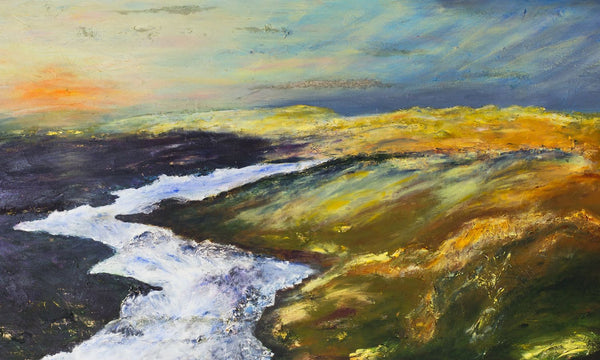Everything you need to know about landscape painting
Discovering landscape painting: An exploration of art, techniques, and its benefits
Landscape painting has always held an important place in art history, capturing the beauty and diversity of the natural world. Today, it continues to be a favorite subject for artists and art enthusiasts. But what is it about landscape painting that makes it so appealing and captivating?

Landscape painting: A bit of history
Landscape painting has its roots in antiquity, but it fully developed as a genre during the Renaissance, thanks to painters like Leonardo da Vinci and Albrecht Dürer. Over the centuries, landscape painting has evolved, incorporating new techniques and reflecting the cultural and social concerns of each era.

Artistic movements have played a significant role in the rise of landscape painting. Romanticism in the 18th and 19th centuries, for example, focused on the sublime beauty and power of nature, often depicting dramatic elements such as mountains and storms. Impressionism in the 19th century, led by talented artists like Claude Monet, captured the essence of landscapes using quick brushstrokes and vibrant colours to represent variations in light and atmosphere. Post-Impressionists such as Vincent van Gogh and Paul Cézanne, a few decades later, explored new painting techniques to express their personal vision of landscapes, playing with forms, colours, and textures.
Why painting landscapes?
One of the main reasons we enjoy landscape painting so much is because it helps us to connect with nature. Painted landscapes remind us of the beauty and diversity of the world around us, urging us to pause and marvel at the natural world's wonders.

However, landscape painting can also be used to escape from our hectic everyday life by transporting us to peaceful and serene settings. Landscapes allow us to unwind and find peace away from the stresses and pressures of our daily lives. Furthermore, looking at a landscape might induce nostalgia or form a link with happy recollections, boosting our emotional affinity to these works.
Landscape painting is frequently recognized for its visual beauty and ability to convey the spirit of an area or situation. Artists who succeed in this genre can capture the nuances of light, colour, and texture, resulting in works that appear nearly real.
Landscapes, as cultural and historical witnesses, reflect the concerns and values of various times and societies. For example, Romantic landscapes from the nineteenth century frequently stress nature's strength and majesty, whereas Impressionist landscapes attempt to depict the atmosphere and lighting conditions of a given time. We can learn more about our own history and the evolution of our relationship with environment by studying landscape paintings throughout history.
Techniques used in landscape painting

Depending on their style, skills, and preferences, the artists described above, as well as their colleagues, have employed a range of approaches to paint landscapes. To begin with, composition is critical in order to produce a balanced and harmonious landscape by using the rule of thirds, perspective, or additional principles to guide the arrangement of elements on the canvas. Colour is an important component in representing the ambiance and feeling of a scene. Texture adds depth and richness to landscapes by using methods such as glazes and impasto. However, light and shadows play a significant part of forming the shapes and volumes in any good landscape painting.
How to paint landscapes?
Because of the complexity of techniques and abilities required to authentically reproduce natural components, landscape painting can be difficult for beginners. So, instead of putting pressure on the outcome, why not use paint by numbers to learn and enjoy a pleasant moment?

Paint by numbers is an excellent approach for novices to become acquainted with the fundamental skills of landscape painting while having a creative, enjoyable, and relaxing experience. You won't have to consider colour harmony, composition, shadows, or lighting! Simply follow the pre-printed template and use the relevant Figured'Art paint by numbers kit colours.
By following the provided instructions, aspiring artists will gradually improve their mastery of the basic techniques of painting. This learning experience will enhance self-confidence and help you become more acquainted with landscape painting in a less intimidating way.

Moreover, paint by numbers is a relaxing and therapeutic activity that helps reduce stress and anxiety. The creative process requires concentration and attention, and it will help you temporarily detach from your worries and daily stress. By focusing on creating a work of art, you will immerse yourself in a meditative and calming state, promoting relaxation and mental well-being.
Whether you are a beginner or an experienced artist, don't hesitate to embark on this artistic adventure to fully enjoy these benefits and enrich your creative experience. One thing is for sure, by completing a landscape painting by numbers, you will experience a sense of accomplishment and pride. Keep practicing and explore new challenges with Figured'Art!
